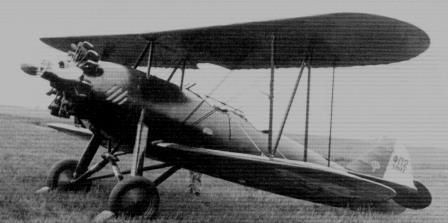In 1933, the command of the Yugoslav Royal Air Force (YRAF)decided to replace outdated planes with modern school aircraft, for transitional training from basic training to combat. Zmaj Factory designed a prototype biplane, Fizir FP-1, in 1993 for transitional pilot training, but it did not satisfy all the requirements set by the YRAF. As a result, aircraft designers and engineers, Rudolf Fizir and Dušan Stankov, made adjustments to the Fizir FP-1 and so the plane became the, Zmaj Fizir FP-2.
The designers opted for the concept aircraft biplane, although the YRAF preferred an aircraft with one low wing (due to the development of modern combat aircraft). In the end, the concept of a new transitional school aircraft was accepted. Prototype Zmaj Fizir FP-2 (Fizir Prelazni) with a Gnome-Rhone K-7 engine of 308 kW power was completed and test flown at the end of 1933. More test flights followed, and by 1934 the plane showed good results. The Zmaj modified the FP-2 during 1934 using a Walter Pollux 2 engine of 235 kW power, but the results were not satisfactory.
The Zmaj Fizir FP-2 was a two-seater single-engine biplane aircraft, with air-cooled, 7 cylinder radial engine, Gnome-Rhone K-7 , and a pair of struts on each side. It had flaps on the upper and lower wings. Landing gear is fixed to a shaft, and deployment uses a rubber rope. Fuselage and wings were wood covered with canvas. The plane represented a classical "Yugoslav manufacturers 'school'" - a two-seater, two wings, solid wood construction and polished aerodynamic shape, easy to fly, stable and reliable aircraft that is largely insensitive to pilot errors.
A total of 66 aircraft of this type were produced and served in the Yugoslav Royal Air Force from 1936 to 1941. They were used for training military pilots. The first series of 20 of these aircraft were delivered to the YRAF in early 1936 and were immediately introduced into the first and second Pilot School. From 1938 to 1940 45 more aircraft were delivered. All three series aircraft were equipped the same, except the third series of five aircraft that were equipped to fly blind. These planes had a new pilot's panel and Zemun Teleoptik (similar to the Rogožarski PVT). The fifth series Zmaj Fizir FP-2 (15 copies ordered in 1940) was not completed by the start of the April war. At the beginning of 1943 the Germans were allowed to complete the fifth series aircraft Zmaj Fizir FP-2 for the Croatian Air Force, but by 22 October 1944 (Liberation Day Zemun) only 8 aircraft were delivered. The last 7 aircraft were completed and handed over after the liberation of the Air Force for use by the Yugoslav Army. Thus the total number of Zmaj Fizir FP-2 aircraft produced was 81.
The Italians seized 13 Zmaj Fizir FP-2 aircraft and with the Rogožarski PVT aircraft they were used from May 1941 to June 1943 against the rebels in Montenegro and Albania. The Germans seized 7 Zmaj Fizir FP-2 at the Butmir airport and handed them over to their allies, the Croats (NDH), which used them throughout the war, starting in 1941. All planes of this type that survived the war were included in the Yugoslav Army Air Force (RV JA) and flew there until 1947. The postwar registry included were 12 Zmaj Fizir FP-2 planes. The remains of one of these planes are kept at the Museum of Yugoslav Aviation.
| Type |
2-seat trainer |
| Engine |
1 Gnome-Rhône K7 with a 2-bladed prop. |
| Dimensions |
Length 7,90 m , height 2,90 m , span 10,80 m , wing area 28,80 m2 , |
| Weights |
Empty 740 kg, loaded 1450 kg |
| Performance |
Max.. speed 200 km/h , 238 km/h at sea level, range 580 km, service ceiling 6800 m |
| Type |
Werk.Nr |
Registration |
History |
|
|
6802 |
Captured by the Germans and given ti the Croatian Air Force |
